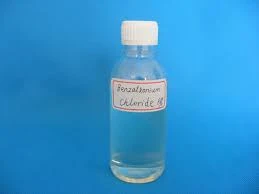poly aluminium chloride in wastewater treatment
Poly Aluminium Chloride in Wastewater Treatment A Comprehensive Overview
Water pollution is one of the most pressing environmental challenges of our time, necessitating effective wastewater treatment methodologies. Among the various coagulants employed in wastewater treatment, Poly Aluminium Chloride (PAC) has gained prominence due to its efficiency, versatility, and cost-effectiveness. This article delves into the significance of PAC in wastewater treatment, its mechanisms of action, benefits, and its broader implications for environmental sustainability.
What is Poly Aluminium Chloride?
Poly Aluminium Chloride is a type of inorganic polymer, often used as a coagulant in water treatment processes. It is a highly soluble aluminum salt characterized by a high Charge Density. PAC is typically produced by hydrolyzing aluminum chloride and is available in various forms, including liquid and powder. The selection of a specific form is largely dependent on the application requirements and the specific characteristics of the wastewater.
Mechanism of Action
The effectiveness of PAC in wastewater treatment can be attributed to its mechanism of coagulation and flocculation. When PAC is added to contaminated water, it forms aluminum hydroxide, which interacts with negatively charged particles in the water. This interaction leads to the neutralization of charges and the agglomeration of particles, forming larger clusters known as flocs. Once these flocs are formed, they can be easily separated from the treated water through sedimentation or filtration.
The process can be summarized as follows 1. Coagulation occurs when PAC neutralizes the electric charges of suspended particles, allowing them to come together. 2. Flocculation follows, during which the small particles collide and stick together to form larger aggregates. 3. Separation occurs through sedimentation, where the denser flocs settle to the bottom, and the clarified water is drawn off for further treatment or discharge.
Benefits of Using PAC
The application of PAC in wastewater treatment presents numerous advantages
poly aluminium chloride in wastewater treatment

1. High Efficiency PAC is known for its superior coagulation power compared to traditional coagulants like aluminum sulfate. It is effective over a wide pH range and shows better performance in removing turbidity, color, and organic matter.
2. Reduced Sludge Production Compared to conventional coagulants, PAC generates less sludge. This reduction in sludge volume not only lowers disposal costs but also minimizes the environmental impact of sludge management.
3. Improved Water Quality The use of PAC significantly enhances water quality by efficiently removing contaminants, thereby enabling compliance with stringent regulatory standards.
4. Cost-Effectiveness Despite its superior performance, PAC is relatively inexpensive compared to other specialized treatment chemicals, making it an economical choice for many wastewater treatment facilities.
5. Versatility PAC can be used in various applications, including drinking water purification, industrial wastewater treatment, and the treatment of municipal sewage.
Environmental Sustainability Implications
The application of PAC in wastewater treatment aligns with the broader goals of environmental sustainability. By efficiently reducing pollutants and enhancing water quality, PAC supports efforts to preserve aquatic ecosystems and safeguard human health. Furthermore, the reduced sludge production contributes to lower greenhouse gas emissions associated with sludge disposal. As industries and municipalities strive to meet more stringent environmental regulations, the demand for effective coagulants like PAC will likely continue to grow.
Conclusion
In conclusion, Poly Aluminium Chloride plays an essential role in the wastewater treatment process. Its efficient coagulation properties, cost-effectiveness, and minimal environmental impact position it as a leading coagulant in modern water treatment practices. As the global community faces increasing water scarcity and pollution challenges, the adoption of innovative treatment solutions like PAC will be crucial in ensuring the availability of clean, safe water for future generations. The ongoing research and development in this field will undoubtedly lead to enhanced formulations and broader applications, further cementing PAC’s vital role in water management and environmental conservation.
-
The Ultimate Guide to Flocculants: Transforming Water TreatmentNewsNov.01,2024
-
Improve Your Water Treatment Solutions with PolyacrylamideNewsNov.01,2024
-
Enhance Your Water TreatmentNewsNov.01,2024
-
Empower You to Achieve the Highest Standards of Water QualityNewsNov.01,2024
-
Effective Scale InhibitorsNewsNov.01,2024
-
Discover the Power of Poly Aluminum Chloride in Water TreatmentNewsNov.01,2024





